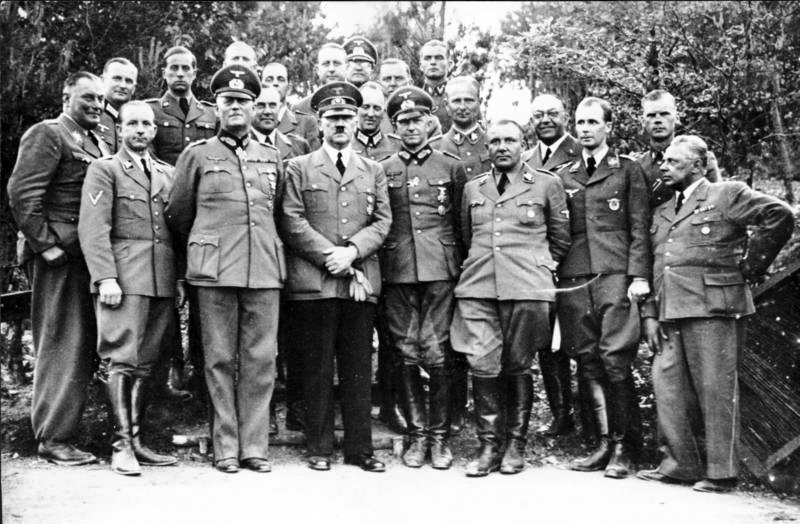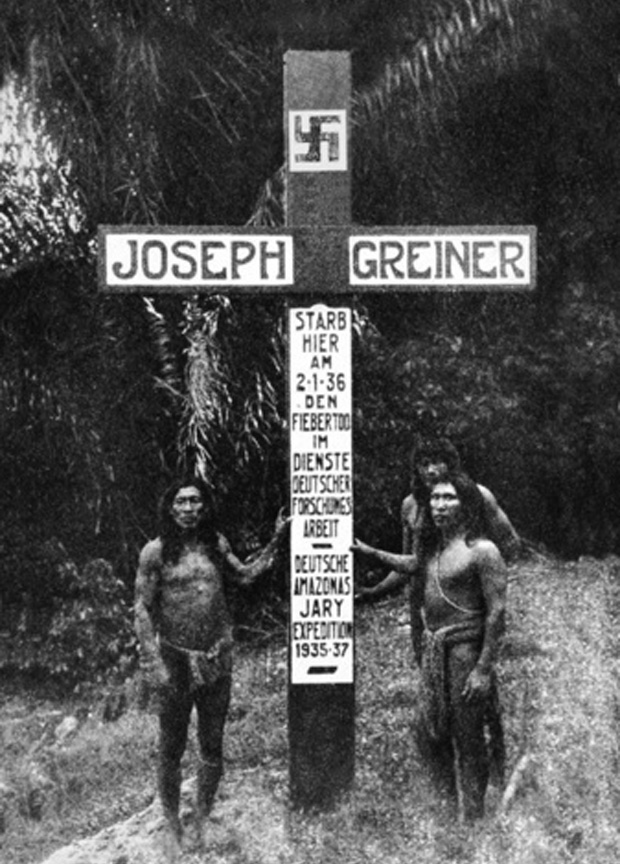These guns are from the Call of Duty video game. Very accurate!

A newly translated German book examines in detail how Hitler during the Second World War relied on a cocktail of animal hormones, vitamins, narcotics, and cocaine.
The article drew on an extract derived from Blitzed: Drugs in Nazi Germany, published in the Daily Mail. Author Norman Ohler wrote the dictator was a “super junkie,” and his favored drug contained oxycodone, known in Germany as Eukodal.
Hitler became hooked eventually on a mix of drugs administered by his personal physician, Theodor Morell, nicknamed the “Reich injection master.”
Morell explained how Hitler would go from fatigue and exhaustion to refreshed and very satisfied after the injection of a combination of newly developed vitamin and hormones.
In addition, he also supplied Hitler’s lover, Eva Braun, with a similar combination and other drugs to suppress her menstruation, so the duo had more time for intimacy. Morell was steadfast regarding the benefits of physical love including extramarital affairs if required. As written in the book, Morell recalled years after the war that Hitler had often canceled medical examinations to hide bodily wounds resulting from Braun’s forceful sexual behavior.
When the Red Army started conquering more territory in late 1944, Hitler became increasingly resistant to the drugs.
His veins were so damaged that veteran drug–injector Morell found difficulty penetrating them, Ohler wrote. The venous skin from so many perforations became scarred, inflamed and a strange shade of brown. Each injection made a new wound that connected with the previous one. It made an elongated, growing crust; what addicts call track marks, reports the Jerusalem Post.
Hitler’s suicide was assisted by drugs, as well, explained the author: with no Eukodal left he chose the bullet.
The book maintains that drugs for Nazis were first tried out with concentration camp prisoners.
In one instance using a cocaine chewing gum, prisoners at Sachsenhausen concentration camp were given very high doses of drugs such as 50 to 100 milligrams of pure cocaine in pill form, Pervitin (akin to crystal meth) as chewing gum, or 20 milligrams of cocaine also supplied as chewing gum.
Prisoners were then forced to march overnight to test the effects. Ohler wrote that after marching seven or eight hours, most stopped marching because of sore feet.
As printed in, The Victory Division News. No. 4. December, 2000.
The CIA has published online nearly 13 million pages of declassified records, including papers on the US role in overthrowing foreign governments and the secret ‘Star Gate’ telepathy project.
The range of documents, known as the CREST (CIA Records Search Tool) database, covers an array of materials related to the Vietnam War, Korean War and Cold War. One example is data on the Berlin tunnel project (code-named Operation Gold), which was a joint CIA and British intelligence scheme to carry out surveillance on the Soviet Army HQ in Berlin during the 1950s.
In all, more than 12 million documents are accessible, covering the history of the CIA from its creation in the 1940s up to the 1990s – with intelligence officials giving assurances that the half-century of data is in its entirety, with nothing removed.
“None of this is cherry-picked,” CIA spokesperson Heather Fritz Horniak told CNN. “It’s the full history. It’s good and bad.”
For instance, details are provided on the CIA’s participation in the 1973 coup in Chile which saw the rise of the Pinochet regime, as well as on the infamous MK-Ultra project, dubbed the CIA mind control program, which involved experiments – some of them illegal – on human subjects, to develop drugs and procedures for interrogation and torture.
It’s now a couple of decades since the documents were actually declassified, though. The cache was ordered to be released by then-President Bill Clinton in 1995. The papers have been accessible since 2000, but only on four computer terminals at the National Archives in College Park, Maryland.
“Access to this historically significant collection is no longer limited by geography,” Joseph Lambert, the CIA’s information management director, said in a press release.
Over the decades about 1.1 million pages from the database were printed out by historians and journalists, but the CIA banned the actual materials from publication.
“Declassifying all the documents in the world doesn’t accomplish anything if people can’t get access to them,” Steve Aftergood, the director of the Project on Government Secrecy at the Federation of American Scientists, told BuzzFeed.
The inability to access the database online prompted outrage, and in 2014, MuckRock, a non-profit news organization, filed a Freedom of Information Act to gain access to the documents, but the CIA said it would take at least six years to release the papers. Journalists and researchers then launched a popular Kickstarter campaign to digitize the documents, collecting over $15,000 – surpassing the stated crowdfunding goal and posting some of the papers online.
The CIA made small redactions to the documents, but solely to protect sources and methods that could damage national security, CIA spokesperson Horniak said.
The agency was aiming to publish the documents by the end of 2017, but finished the work ahead of schedule.
“We’ve been working on this for a very long time and this is one of the things I wanted to make sure got done before I left. Now you can access it from the comfort of your own home,” said outgoing CIA director of information Lambert.
The agency continues to review documents for declassification, so the treasure trove has not been unearthed in full, and there’s definitely more to follow.

Deep within Brazil’s Amazon rain forest, there’s a Nazi grave flanked by a towering cross with a swastika in a cemetery close to the isolated outpost of Laranjal do Jari. Inscribed on the cross in German is the name of Joseph Greiner who died there of fever on January 2, 1936 ‘in the service of German research.’
So what is it doing there? It’s the sole reminder of a little-known facet of history when Germany sought to found a colony there by bringing a swath of the Amazon River Basin into the Third Reich.
From 1935 to 1937, a team of Nazi explorers were in the region under the leadership of Otto Schulz-Kampfhenkel, a zoologist, documentary filmmaker, and member of Hitler’s SS. They chopped their way through the jungle around Brazil’s border with neighboring French Guiana. They collected indigenous jewelry, animal skulls, and studied topography along the 491-mile-long Jari River, an Amazon tributary.
The exploration began with the customary scientific appearances, explained Jens Glusing, a longtime correspondent for Der Spiegel, the German-language news outlet. He created a book explaining the Guyana Project. When the war began, Schulz-Kampfhenkel seized this opportunity for Nazi colonial enlargement.
He presented his plans to Heinrich Himmler, the head of the SS and the Gestapo, in 1940. The scheme was a way to curb the influence of the United States by taking control of French Guiana and the neighboring British and Dutch colonies. But the dream faded, and it might have been the expedition itself that doomed the venture.
Matters didn’t go well from the start. The expedition had a Heinkel 72 Seekadett seaplane, an example of Nazi industrial prowess – but it capsized after striking driftwood just a few weeks after the expedition started, National Post reported.
From then on they were compelled to rely on native tribes for their survival and finding their way through the jungle. Malaria and other ailments felled them. Schulz-Kampfhenkel, the expedition’s foreman, developed diphtheria and an unknown fever took Grenier’s life.
The mission was abandoned, and today only Grenier’s three-meter-high monument remains as the testament to their failed endeavors.
